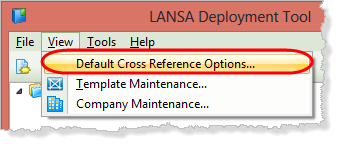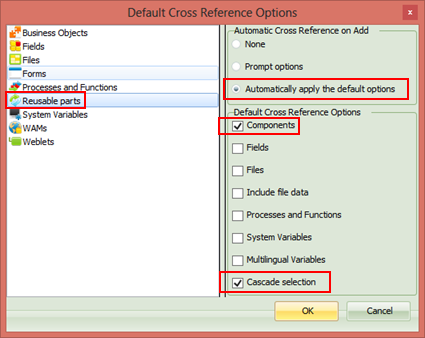Step 2. Define Default Cross Reference Settings
DTE010 – Set Up the Deployment Tool
Cross referencing allows you to select an object (for example, a Function or Component) for inclusion in a Version or Patch, and then have all, or selected types, of the related executable and definition objects automatically included at build time.
Any default options defined here can be overridden when editing the Version or Patch, but the investment of time to set up your default values correctly can by-pass several repetitive steps in the definition process.
1. Before opening the dialog, open and review Default Cross Reference Settings.
Note that the cross referencing facilities are extremely flexible:
- Default cross reference settings may be defined by object type.
- Defaults may always be overridden, even when options are not automatically prompted.
- is always available as objects are added to a package, including when there are no default settings defined.
Leave the online guide open, you will refer to it again in a later step.
2. Open the dialog from the menu:

Note: When you first use the Deployment Tool, no default cross reference settings are defined for any object type.
3. Setting are defined by selecting one object type at a time and then defining the cross referencing required.
Select Forms and select options to:
a. Automatically apply the default options.
b. Cross reference Components.
c. Select the option to Cascade Selection.
4. Select Reusable Parts and set the same defaults as Forms.

5. Click to save your settings and close the dialog.